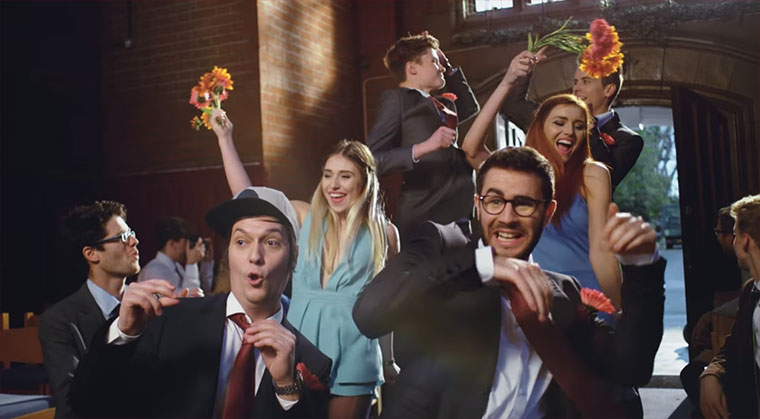

The formula was really quite simple: bring together the most popular content creators that are white and family-friendly and then throw in enough people of color, people who identify as LGBTQ+ or international creators and call it a day. It seemed like, from YouTube’s perspective at least, that the primary mission was checking off all of the right boxes so that no one could get too upset. Instead, it is merely a preemptive exoneration from all claims of insensitivity or inequality. This rewind was symptomatic of a disease that would come to plague YouTube Rewind for the coming years, which is the peddling of empty virtue signaling that does nothing for the groups it pretends to be advocating for. From there, we watch a bunch of people randomly dancing and smiling to whatever pop songs were popular that year until we return to the same rainbow-painted wall with more people randomly dancing and smiling in front of it. The video opens up with Lily Singh - who wouldn’t come out as bisexual until 2019 - dancing along a wall painted in the colors of the rainbow Pride flag.

This could only last so long, and 2015 was the year that YouTube went fully corporate and dove headfirst into the digestible, politically correct deep end. This heightened subjectivity would inevitably lead to hurt feelings, but you can see - for at least the first few years - YouTube did its best to hold it all together. When YouTube decided to move away from the simple, objective model of previous years, it adopted the burden of having to consciously choose what to include - and, more importantly, exclude, from its rewinds. A corporation as giant as YouTube could never reconcile its need to maintain its public image with the desires and interests of the people that actually use its app. Then, in 2012, the model started to change, and this is when things started to go downhill. In 2011, Rebecca Black hosted the rewind - something I mention only because her song “Friday” was potentially the first instance of someone going viral on the internet for making art that people hated - and it was essentially just a collage of the year’s most popular videos. It was simplistic and only highlighted the most viewed videos of the year. In its infant stage, it was much more like a Spotify Wrapped than the disaster we saw unfold in 2018. With that being said, YouTube Rewind used to be a lot better. The music was always boring, the dancing is uncomfortable to watch, the transitions are corny and there is always a late-night host or two to make you say, “what is he even doing here?” It’ll continue to be inspiring to see the myriad of ways the most creative content producers in the world - our YouTube creators - encapsulate the end of year in their video recaps, as YouTube retires its own Rewind video.No one ever thought that YouTube Rewind was that great.

YouTube, meanwhile, suggests viewers watch “Rewind” videos from popular creators: The YouTube Creators Twitter account added that it is “refocus our energies on celebrating you and the trends that make YouTube 🔥 with a different and updated kind of experience.”Īs such, a replacement recap experience appears to be in the works, but no details are available yet. The company told Tubefilter that the decision was not due to past criticism.
#YOUTUBE REWIND 2015 SERIES#
YouTube will similarly not make a Rewind for 2021, but that’s due to the entire series coming to an end. YouTube did not release a Rewind in 2020, citing how “different” and non-celebratory the year was.

It has since garnered over 19 million dislikes (to 3 million likes), with the company course-correcting in 2019 as a result. In 2018, YouTube infamously published a greatly panned edition of Rewind due to the lack of community relevance. It was often a big-budget projection that incorporated top Creators. The first YouTube Rewind was released in 2010 as a recap of the year in trends, memes, and other pop culture moments that occurred on the video site. With YouTube Rewind changing in recent years, including the lack of one in 2020, the Google video site said today that it’s ending the annual recap video, though a “different and updated kind of experience” might take its place.


 0 kommentar(er)
0 kommentar(er)
